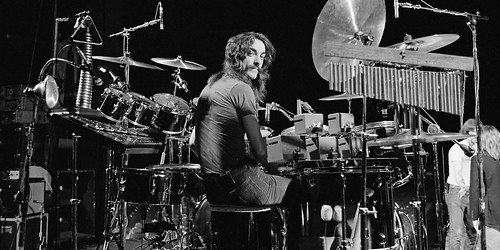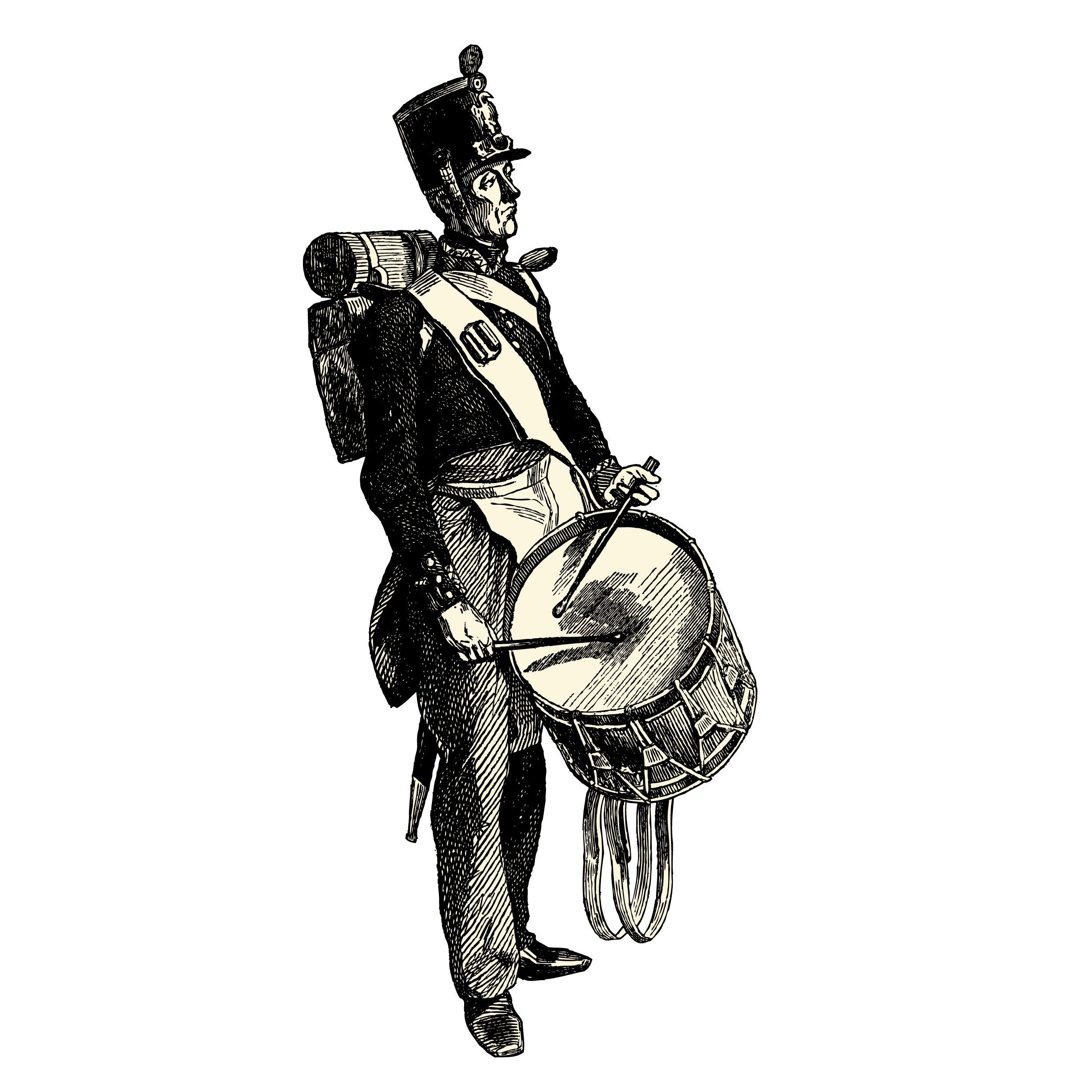
A: Five. One drummer to screw in the light bulb and the rest of the band to talk about how much better Neil Peart could have done it.
Guitar players and singers may get most of the attention, but without the drummer modern music wouldn’t exist. Without the drum kit, the modern drummer wouldn’t exist, so logically we can say that it’s the modern drum kit that made it all possible. With that in mind, here’s a bit of history about one of the most important developments in music history.
But first…the grip. Did you ever notice some drummers place the stick of their non-dominant hand between their thumb and forefinger, while other drummers hold both sticks the same way using their thumbs and fingertips? The latter is called the matched grip and the former is known as the traditional grip. The origins of the traditional (or trad) grip go all the way back to 18th century military drummers.
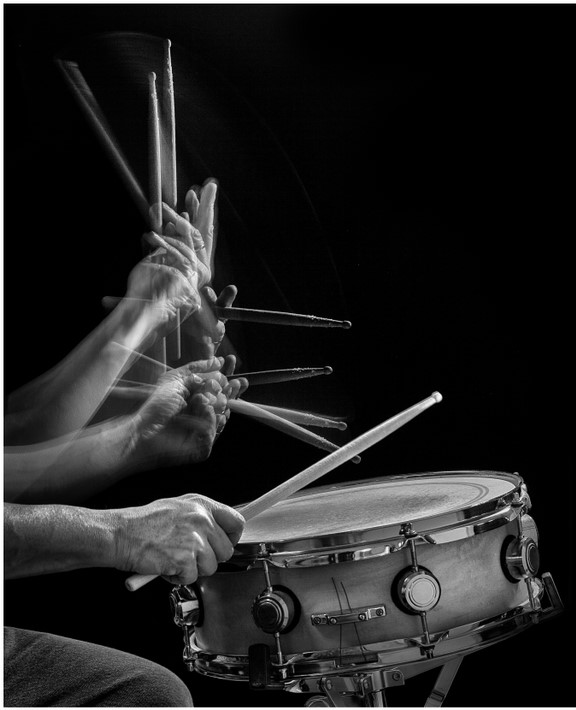
Early jazz musicians, particularly in New Orleans – the Birthplace of Jazz – were generally former military musicians, and martial music was a cornerstone of the style. We’re all familiar with the New Orleans street bands that are still a fixture of the city’s music scene today. When playing for free during Mardi Gras or a funeral, having several percussionists to handle the big bass drum, snares and cymbals wasn’t a problem, but as the music began to be played in night clubs economics once again played a role in how many musicians a band could bring to a show.
Picture at right from author's personal collection, circa 1952.
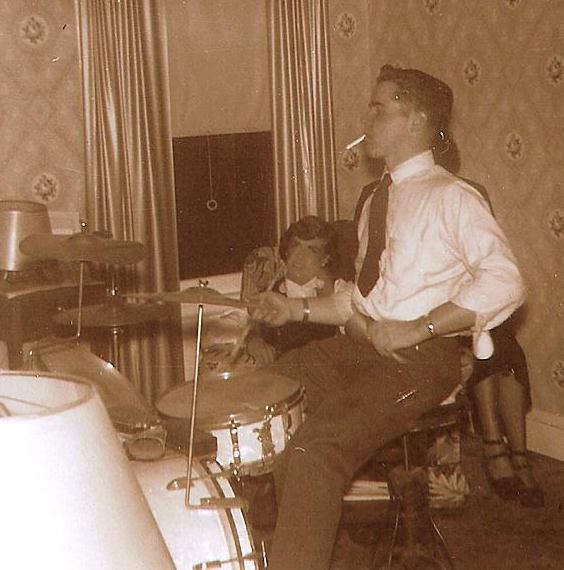
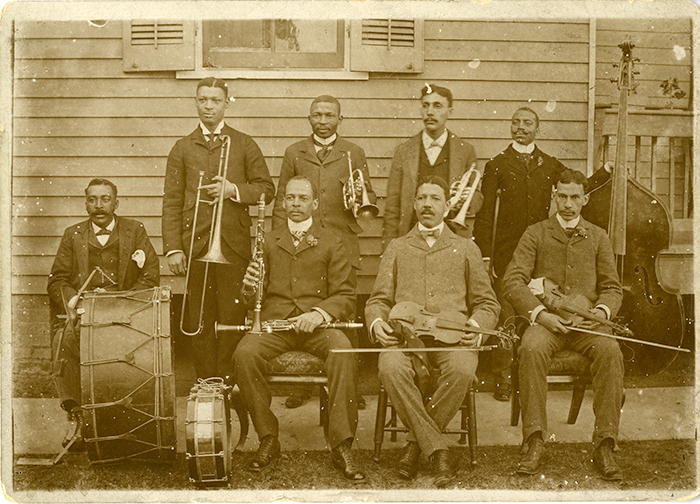
The first recognizable drum kit as we know it came about after New Orleans drummer Dee Dee Chandler (pictured at left) affixed a crude pedal to his bass drum freeing up both hands to develop polyrhythms on the snare or toms revolutionizing percussion, and music in general. His device consisted of a rope and pulley attached to a beater – he would ‘kick’ the base of the pulley device which would then strike the skin of the bass drum. Although the device was terribly slow and hard to control in a rhythmic way, in 1896 he was pictured as the first modern “kit drummer.”
Brothers William and Theobald Ludwig applied for the first patent of their version of this bass drum pedal device in 1909. Their version of the pedal sat on the floor and used a spring fulcrum assembly which allowed the drummer to develop more sophisticated rhythms using their foot. In 1936, the Ludwig Company described their groundbreaking drum pedal as “twenty-five years of pedal progress” and “the foundation of the Ludwig company.” The Ludwig “Speed King” pedal was introduced in 1934 and was the premiere kick drum pedal until well into the Classic Rock era.
Lastly, the development of the drum kit owes its existence to a large extent to the music itself. The groove and “swing” that defined jazz and then blues music was difficult – if not impossible – to develop with several drummers playing at the same time. The beat had to remain somewhat rigid in order to accommodate each percussionist’s rhythmic interpretation. Today, multiple percussionists can develop all sorts of wonderful grooves and polyrhythms simply because they have a century and a quarter of example to follow, but it wasn’t until singular drummers playing a collection of percussive instruments at the same time that the swing that defines music to found its groove.

